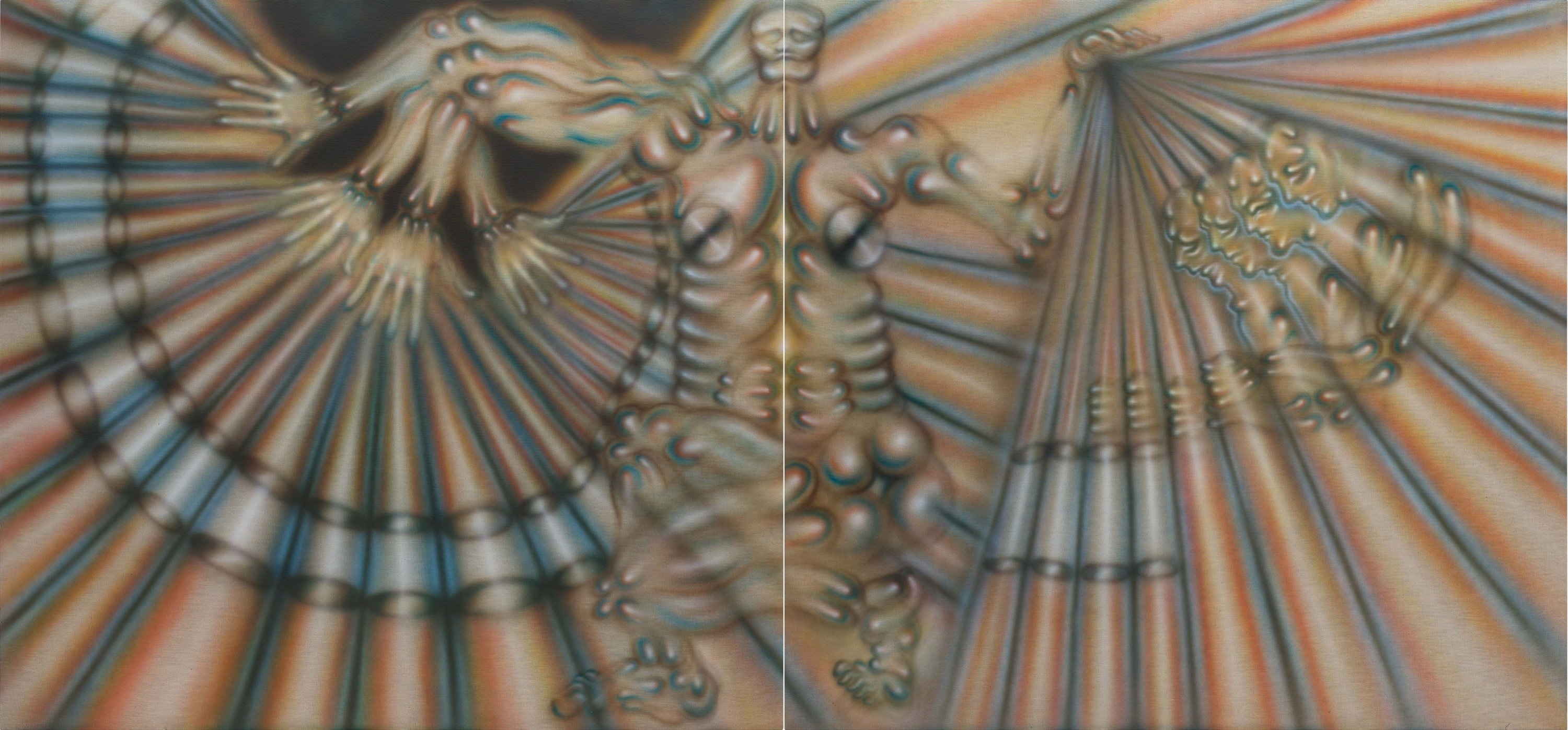Veronika Hapchenko
demeter, after Ivan Lytovchenko
FSP ING 0251
A few years before the explosion of the Chernobyl nuclear power plant, Ivan Lytovchenko created monumental mosaics on Lenin Avenue in nearby city of Pripyat. The mosaic titled Creation depicts the Greek goddess of the harvest Demeter. Inspired by the avant-garde, Lytovchenko draws on mythological themes for a reason. For the Ukrainian dissidents of the 1960s generation, ancient Greece symbolised resistance against imperialism. Hapchenko reimagines the mosaics after Russian troops have entered Pripyat in 2022. The wide-eyed figures depicted seem to linger in horror announcing the arrival of another catastrophe. In Hapchenko's work, the eponymous Demeter emerges from light rays painted using an airbrush technique. The pigment on the canvas captures a deteriorating image that hovers over a city with an uncertain future.
The work was created for the Interloper exhibition at the Import/Export Gallery during Warsaw Gallery Weekend 2023 and was awarded the ING Polish Art Foundation Main Prize.
Veronika Hapchenko
b.1995, Kiev
Painter, author of objects. She studied at the Kyiv State Film and Television School and the Academy of Fine Arts in Krakow. Exploring the philosophy, literature and art history of the former USSR, Hapchenko traces the utopian visions, occult and esoteric themes present in Soviet ideology. She draws attention to their cultural continuity and then reconstructs them in the context of contemporary reality and the remnants of the Soviet system in Ukraine. She builds her exhibitions like a carefully designed stage set, in which each work plays an important role in the narrative. She lives and works in Krakow.
b.1995, Kiev
Painter, author of objects. She studied at the Kyiv State Film and Television School and the Academy of Fine Arts in Krakow. Exploring the philosophy, literature and art history of the former USSR, Hapchenko traces the utopian visions, occult and esoteric themes present in Soviet ideology. She draws attention to their cultural continuity and then reconstructs them in the context of contemporary reality and the remnants of the Soviet system in Ukraine. She builds her exhibitions like a carefully designed stage set, in which each work plays an important role in the narrative. She lives and works in Krakow.
